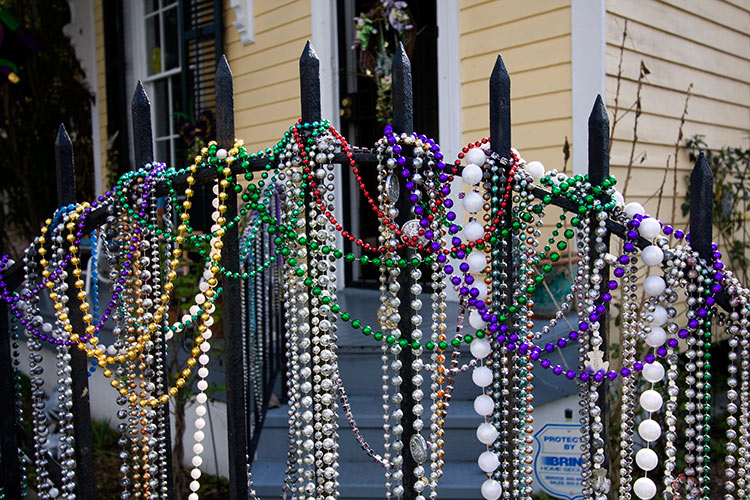‘Bead lust’: Mardi Gras and its pagan roots
Mardi Gras is celebrated throughout the U.S. Gulf Coast. Berkeley archaeologist Laurie Wilkie has studied these festivities and written about the beads and other objects that come with the big party (and what they suggest about Fat Tuesday's ancient predecessors).

February 9, 2016
Berkeley archaeology professor Laurie Wilkie, author of the 2014 book Strung Out on Archaeology, studies ancient rituals, including the roots of New Orleans’ Mardi Gras celebrations.

Mardi Gras, New Orleans (Derek Bridges via Wikimedia Commons)
“Carnival celebrations in Europe pre-date Christianity, but like so many other pagan festivals, the church found a way to incorporate them into the religious calendar,” she says. “New Orleans likes to claim that the first Mardi Gras there was held in 1699.” But the Mardi Gras celebrations seen today “are a largely American celebration, modeled after the parades of the ‘cowbellions’ in Mobile, Alabama, in the 1850s.”
Wilkie first attended New Orleans’ Mardi Gras while doing dissertation research in Louisiana. “I was wonderfully astounded by it all and really wanted, as an archaeologist, to know more about all these crazy plastic beads getting hurled about,” she says in an interview with fellow archaeologist Kristina Killgrove. “I found that no one was dealing with the material aspects of street celebrations during Mardi Gras.”
Read the Q&A with Wilkie on Forbes Online.